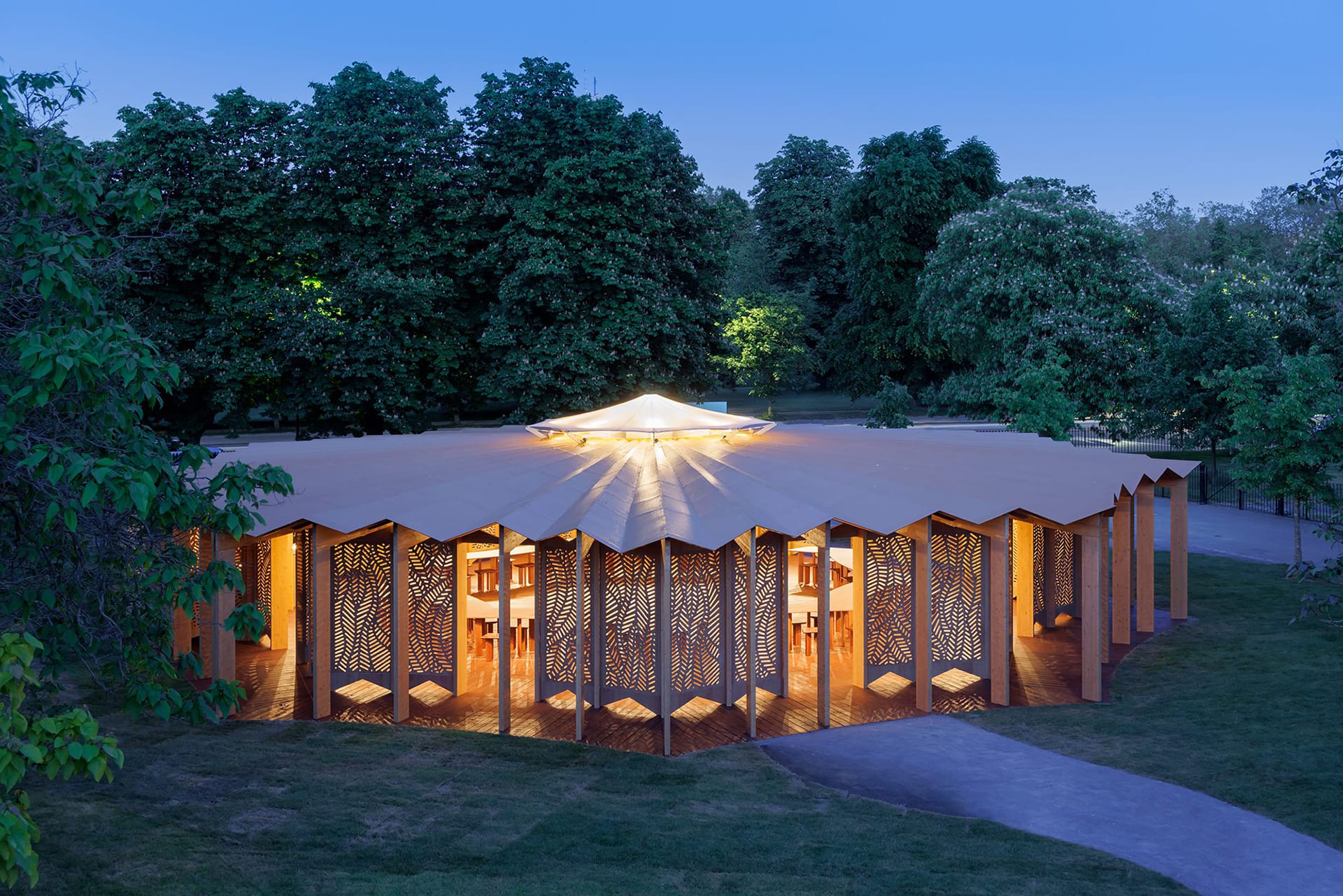Lina Ghotmeh’s New Serpentine Pavilion in London Is Filled with Exquisite Details
The French-Lebanese architect’s design serves as both a tranquil space to commune with nature as well as a convivial spot for sharing a meal

A pretty wooden building with a roof like a dainty pleated parasol has landed in London’s Kensington Gardens. The work of the French-Lebanese architect Lina Ghotmeh, it is this year’s Serpentine Pavilion, the 22nd in an annual series that has seen temporary designs by names as various as Frank Gehry, Sou Fujimoto, Francis Kéré, and Frida Escobedo. In every case, it has been the architect’s first built structure in the United Kingdom.
While last year’s offering by the American artist Theaster Gates was an imposing singular black cylinder that dominated its immediate landscape, Ghotmeh’s serves as something of an antidote. It is light and breezy, occupying its space with delicacy and grace. The deputy mayor of London, Justine Simons, likened it to another London icon on the morning of its official opening on June 5. “It’s like Mary Poppins—both comforting and magical,” Simons says.

Ghotmeh, a Galerie 2021 Creative Mind, grew up in post-war Beirut and chose to study architecture in order “to build positive spaces, and create places to allow us to meet each other,” she says, sitting inside the pavilion’s peaceful interior, where light is filtered through fretted panels. Dressed in a pleated blue Issey Miyake coat, she was in perfect harmony with her own design. “I also believe in getting closer to nature, by bringing it into right into my architecture.”
In the Stone Garden apartment block in Beirut, this meant integrating planters on the generous balconies. In the bucolic surroundings of Kensington Gardens, she has simply made a very porous structure, from which the green leaves on the surrounding historic trees are continually on view.


The pavilion’s tentlike form is supported by wooden walls that are perforated with leaf-shape cut-outs and scalloped along their edges, giving them an essence of fabric. “I love textiles, I love the work of Sheila Hicks,” says Ghotmeh. “The idea of weaving and hand-making are important to me, as are the micro-details embedded in that practice.”
Indeed the pavilion itself is an exercise in exquisite detail—as finely composed as a Japanese teahouse, its lightweight plywood roof is set upon the slenderest plywood ribs, and all held up by glulam columns with not a single visible fixing. Cable and control systems have been so completely recessed into the timber frame that nothing interrupts the fine lines. It is also entirely demountable, so that it might have a second life. (Previous pavilions have been acquired by major collectors including the Swiss philanthropist Maja Hoffmann and the Irish hotelier Paddy McKillen.)

Ghotmeh often focusses on a single material in her work, for example, the stone of the Stone Garden, or the bricks of the fabulous new Hermès leather atelier in Normandy, France. “It’s about using just one thing, and trying to maximize its potential and to respect it and to give it some magic,” Ghotmeh tells Galerie. “And here it’s linked to the context of the park; it’s an echo of the trees, the flowers, and the leaves all around us here.”


In this serene interior, Ghotmeh has installed 25 specially commissioned tables and 57 stools, made by the Conran Shop in a deep red-stained oak. The tables, which together form a continuous circle in the space, are intended as a place to gather, and also to eat. “This part of the project is called À table, which is what we say in French when a meal is about to begin” explains Ghotmeh. “There is nothing more important than food to encourage conviviality and communication.” Accordingly, she has created a menu focused on healthy organic ingredients which will be served throughout the summer.
With its low-ceiling ambience, dappled with London sunlight, this is surely a pavilion to usher in a summer of love.

